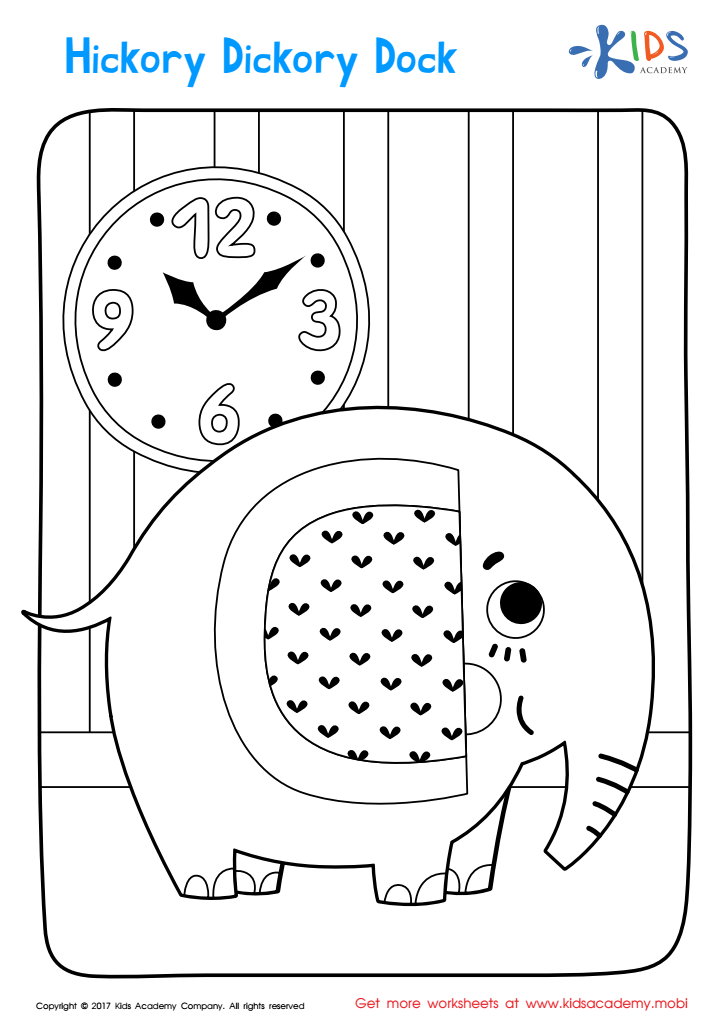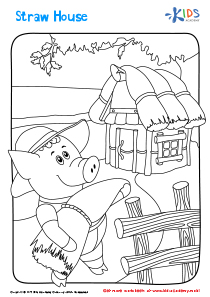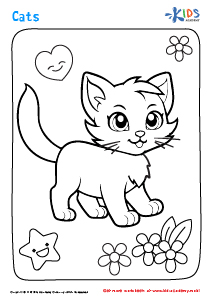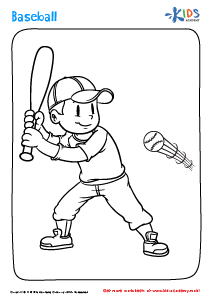Easy Nursery Rhymes Coloring Pages for Grade 2
1 filtered results
-
From - To
Introduce your Grade 2 students to the enchanting world of Nursery Rhymes Coloring Pages with these delightful worksheets! Bursting with creativity and learning, these pages provide a perfect blend of education and fun. Engage young minds as they immerse themselves in beloved rhymes, coloring captivating illustrations that bring each verse to life. With captivating characters and vibrant scenes to embellish, children explore their artistic side while reinforcing essential Grade 2 skills. These Nursery Rhymes Coloring Pages combine imagination and education seamlessly, nurturing a love for learning as youngsters dive into the world of rhyme and color.


Hickory Dickory Dock Coloring Page
Easy worksheets on Nursery Rhymes Coloring Pages can be a valuable tool for Grade 2 students as they offer a multitude of benefits that promote learning and development. Engaging with nursery rhymes through coloring activities not only makes learning enjoyable, but it also enhances various skills required during this crucial stage of education.
Nursery rhymes have been an integral part of early childhood education for generations. They not only entertain children but also serve as a foundation for language development, cognitive skills, and social interaction. By combining nursery rhymes with coloring activities, educators can create an effective learning experience for Grade 2 students.
One of the primary advantages of utilizing easy worksheets on Nursery Rhymes Coloring Pages is the development of fine motor skills. Coloring inside different shapes and lines requires the use of small muscle groups in the hands and fingers. By practicing these movements, students strengthen their fine motor skills, which are essential for tasks such as writing, drawing, and even dressing themselves. Easy worksheets allow students to focus on coloring within the lines, improving their control and precision.
Additionally, Nursery Rhymes Coloring Pages worksheets help students enhance their understanding of colors, shapes, and patterns. Coloring activities encourage children to identify and differentiate between various colors, promoting visual discrimination. Kids can also learn about shapes and patterns within the free kids coloring pages, allowing them to recognize and replicate these patterns in other contexts, such as drawing or problem-solving.
Furthermore, easy worksheets on Nursery Rhymes Coloring Pages can enhance literacy skills. Nursery rhymes are filled with repetitive phrases and rhythmic patterns that aid in language acquisition and phonemic awareness. By engaging with these rhymes through coloring activities, Grade 2 students develop their ability to recognize and reproduce rhyming words, which helps improve reading and writing skills. Additionally, coloring the corresponding images alongside the nursery rhymes can boost comprehension and memory retention.
Incorporating Nursery Rhymes Coloring Pages worksheets also fosters creativity and imagination. Children can choose their own colors and bring the characters and themes of the nursery rhymes to life. This creative outlet allows them to express themselves and explore their artistic abilities. Through coloring, children can develop their own interpretations of the rhymes and engage in imaginative play, further enhancing their cognitive and emotional development.
Another significant benefit of utilizing these worksheets is that they promote social interaction and collaborative learning. These activities can be done individually or in groups, encouraging students to work together, share ideas, and communicate effectively.

 Assign to the classroom
Assign to the classroom






